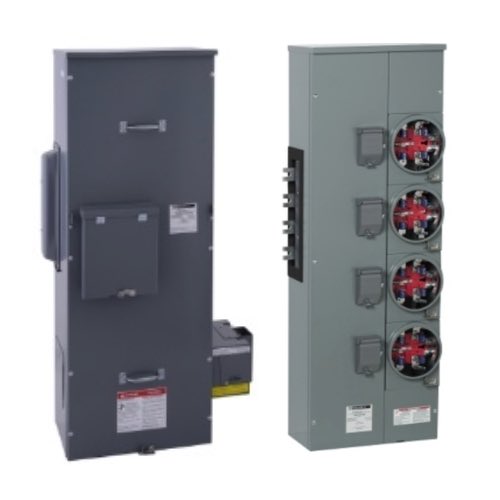- Antennas & Radios (Industrial)
- Batteries (Industrial)
- Breakers, Fuses & Circuit Protection
-
Cable, Wire & Assemblies
- Phoenix Contact Cables & Connectors
- Weidmuller Cables & Connectors
- Ericson Cables & Accessories
- Wire
- Ethernet Cable & Accessories
- Coax Cable & Accessories
- Fiber Optic Cables & Accessories
- Audio, Data & Video Cable & Accessories
- AC Power Cords
- Cable Reels
- Cordsets
- Bonding & Grounding
- Sensor Cables & Connectors
- Wire & Cable Accessories
- View All
- Connectors
-
Enclosures
- All Enclosures
- Steel Enclosures & Junction Boxes
- Stainless Steel Enclosures
- Non-Metallic Enclosures
- Aluminum Enclosures
- Commercial Enclosures
- Consolet Enclosures
- Disconnect Enclosures
- Hazardous Location Enclosures
- HMI Enclosure Systems
- Modular Enclosures
- Network Cabinets & Racks
- Push Button Enclosures
- Solar Enclosures
- Wire Management Wireways & Troughs
- View All
-
Enclosure Accessories
- Accessories for Specific Enclosure Models
- Enclosure Air Conditioners & Cooling
- Enclosure Backplates & Panels
- Enclosure Bases & Base Accessories
- Enclosure Cable Management
- Enclosure Corrosion Inhibitors
- Enclosure Door & Door Accessories
- Enclosure Floor Stands, Pedestals, Legs, & Casters
- Enclosure Lighting
- Enclosure Mounting, Hardware & Fasteners
- Enclosure Paint, Patch Kits & Hole Seals
- Enclosure Power Distribution & Grounding
- Enclosure Pressure, Humidity & Condensation
- Enclosure Racks & Rack Mounting
- Enclosure Rain Hoods & Drip Shields
- Enclosure Roof Plates & Canopies
- Enclosure Shelves, Drawers & Trays
- Enclosure Sun-Solar Shields
- Enclosure Thermal Management
- Enclosure Windows & Inspection Windows
- InterSafe Data Interface
- View All
- Energy & Power Measurement
- Instrumentation
- Labels & Markings
- Lighting
- Motors & Motor Control
- Networking & Communication
- Operator Interface
- Panel Hardware
- Personal Protective Equipment
- PLCs & IO
- Plugs & Receptacles
- Power Supplies & Regulation
-
Push Buttons, Switches & Signaling Devices
- Push Buttons
- Indication & Signaling (Pilot Lights, Beacons, Audibles etc.)
- Selector Switches
- Foot Switches
- Control Stations
- Potentiometers
- Pendant Control Stations
- Biometric Switches
- Joysticks
- Light Switches & Wallplates
- Legend Plates for Switches, Push Buttons & Signaling Devices
- Push Button & Switch Accessories
- View All
- Relays, Timers & Counters
- Safety (Industrial)
- Security & Surveillance
- Sensors
- Signal & Power Conditioning
- Software Services
- Solar
- Structural Aluminum Framing
- Surge Protection & Filters
- Tapes & Adhesives
- Terminal Blocks & Connectors
- Tools & Supplies
- Towers & Direct Embedded Poles
Group Metering

Schneider Electric's group metering solutions are ideal for property owners of multi-tenant buildings, both commercial and residential. These systems are also useful for utilities that need to handle large amounts of metered data from many different types of facilities. At Schneider Electric, group metering systems are engineered not only to accurately measure energy consumption but also to do so cost-effectively for the property owner. That is important because these systems, in most cases, save tenants money compared to metering schemes that rely on more traditional methods.
Schneider Electric's group metering has several important benefits. One of the principal is its modularity. If a building gets bigger or has more tenants, the system can easily be expanded to accommodate them. If something in the system needs attention, it is easy to work on and to keep up. If technological demands change, the system can be upgraded with the new technology; if they change again, it can be downgraded too. The whole thing can be made to work with a variety of technologies that the company can provide—communication, safety, monitoring, and so on—and part of that is due to the system's modular design.
Breakers vs Fuses
Fuses
Fuses are safety devices that are intended to provide protection to both equipment and people in the event of a power surge or an overcurrent situation. A fuse can provide this protection by using a small piece of wire that is sacrificial, and is intended to burn up when too much current is passed through it. When this happens, the fuse eliminates the flow of electricity in that circuit until it is replaced. The size and type of wire that is used in the fuse will dictate how much current can pass through that individual fuse. So the main thing to remember is, when a fuse blows, it must be replaced and cannot be reused.
Circuit breakers
Circuit breakers are intended to be reused after they are “tripped” during a power surge or an overcurrent situation. Much like fuses, circuit breakers are designed to trip at a certain current level. This is intended to protect both equipment and anyone in the area of that particular circuit. Circuit breakers can be found in just about any variation from single phase, low current applications to three phase, and high current applications.
As a general rule: fuses are more simplistic and reliable. They cost less initially and are better suited for individual circuit protection. However, they can create more cost over time with each use and may create hazards due to the exposed connection points. Whereas circuit breakers offer better branch circuit protection and do not need to be replaced after each use. They are more expensive initially and, because of their complexity, are more prone to failure over time.

